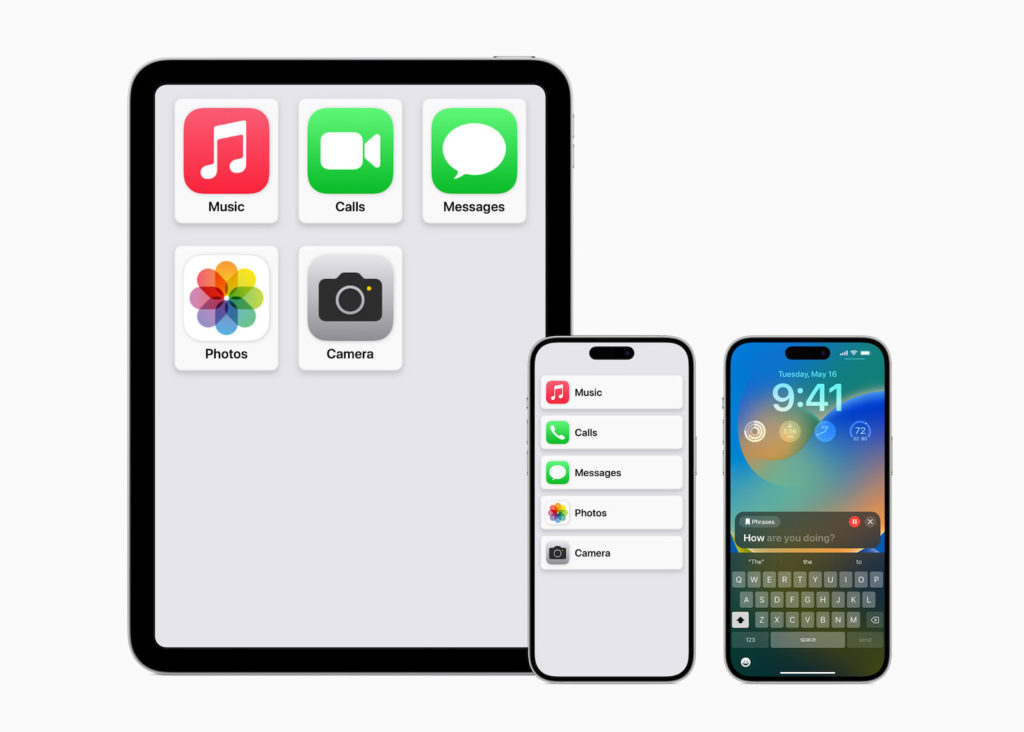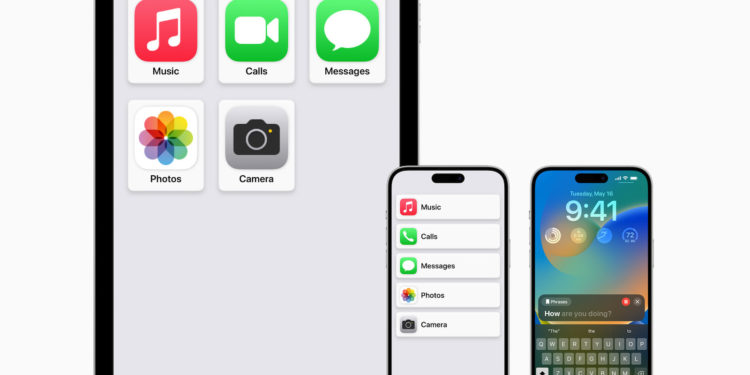Ahead of this year's WWDC (Worldwide Developers Conference), Apple previewed some new features for iPhone and iPad that will be introduced in iOS 17. These features focus on providing accessibility for people with various disabilities. The features featured include Assistive Access, Live Speech, Personal Voice, and other improvements that benefit users with cognitive, speech, visual, and motor impairments.
Accessibility is an important Theme for Apple. The company has always been committed to developing technology that is accessible to all. With the new features in iOS 17, Apple is going a step further to provide an inclusive and user-friendly experience for people with different needs. Assistive Access, Live Speech, Personal Voice and other improvements are designed to remove barriers and make using iPhone and iPad possible for everyone.
Improved accessibility features for an inclusive user experience
One of the standout features Apple announced is Assistive Access. This feature is specifically designed to help users with cognitive impairments. Assistive Access reduces cognitive load by focusing apps and experiences on their essential functions, taking into account feedback from people with cognitive impairments and their trusted supports. The feature provides a personalized interface with high-contrast buttons, large text labels, and tools to customize the experience for the person being assisted. An emoji keyboard and the ability to record video messages facilitate visual communication. In addition to Assistive Access, Apple announced Live Speech, a feature that allows iPhone, iPad, and Mac users to type their speech and have it read aloud.
New accessibility features for various disabilities
This is especially useful for people who have difficulty communicating verbally. In addition, there is an extension called "Personal Voice" that offers users who are at risk of losing their ability to speak the ability to generate their own voice. Personal Voice allows users to record a customized voice that is powered by machine learning and stored securely on the device. Another improvement is in the Magnifier app, which helps visually impaired users interact with physical objects. The "Point and Speak" feature combines the camera app, LiDAR scanner, and machine learning to read out the text on buttons and labels, making navigation easier. The Magnifier app also offers features like person detection, door detection, and image description to help users explore their surroundings.

Apple has also thought of other needs. Deaf or hard of hearing users can connect Made-for-iPhone hearing aids directly to the Mac and adjust them to their individual hearing needs. Voice Control now offers phonetic suggestions for text editing to make it easier to select the right word. Switch Control turns any switch into a virtual game controller to enable people with physical disabilities to play their favorite games on iPhone and iPad. Text size in Mac applications such as Finder, Messages, Mail, Calendar, and Notes can be adjusted for people with visual impairments. There are also options to automatically pause fast animations and customize Siri's speed.
iOS 17: Apple is committed to accessibility
Apple reaffirms its commitment to accessibility and ensures that the needs of people with different disabilities are taken into account with the new features in iOS 17. Assistive Access, Live Speech, Personal Voice and other improvements offer a variety of accessibility features to make using iPhone and iPad accessible to everyone. These new features will be available to users later this year and help ensure that Apple continues to lead the way in the development of inclusive technologies. (Image: Apple)





